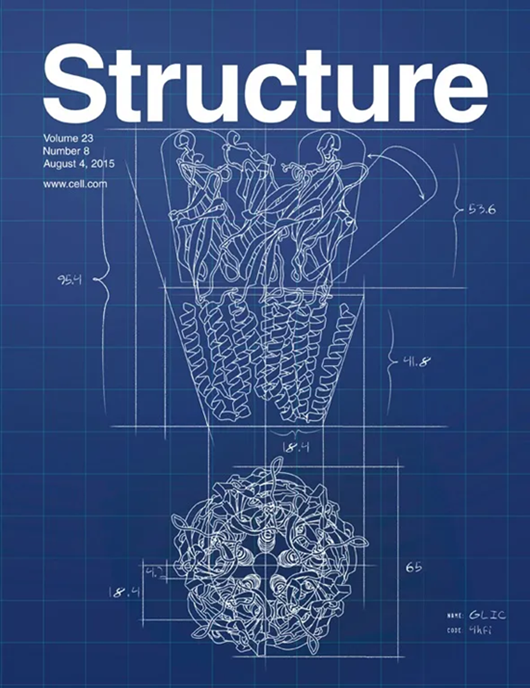Cryo-ET unravels the mystery of Ad5-nCoV vaccines
IF 4.3
2区 生物学
Q2 BIOCHEMISTRY & MOLECULAR BIOLOGY
引用次数: 0
Abstract
The Ad5-nCoV vaccine (Convidecia) against COVID-19 showed promising clinical results. However, the molecular mechanisms underlying its high immunogenicity and potential adverse reactions have remained elusive. In this issue of Structure, Dong et al.1 employed cryo-electron tomography as a powerful technique to show that abundant prefusion spike protein formation is induced by Ad5-nCoV vaccines.Cryo-ET揭开了Ad5-nCoV疫苗的神秘面纱
Ad5-nCoV疫苗(Convidecia)临床效果良好。然而,其高免疫原性和潜在不良反应的分子机制尚不清楚。在本期《Structure》中,Dong等人1利用低温电子断层扫描技术证明了Ad5-nCoV疫苗诱导了大量预融合刺突蛋白的形成。
本文章由计算机程序翻译,如有差异,请以英文原文为准。
求助全文
约1分钟内获得全文
求助全文
来源期刊

Structure
生物-生化与分子生物学
CiteScore
8.90
自引率
1.80%
发文量
155
审稿时长
3-8 weeks
期刊介绍:
Structure aims to publish papers of exceptional interest in the field of structural biology. The journal strives to be essential reading for structural biologists, as well as biologists and biochemists that are interested in macromolecular structure and function. Structure strongly encourages the submission of manuscripts that present structural and molecular insights into biological function and mechanism. Other reports that address fundamental questions in structural biology, such as structure-based examinations of protein evolution, folding, and/or design, will also be considered. We will consider the application of any method, experimental or computational, at high or low resolution, to conduct structural investigations, as long as the method is appropriate for the biological, functional, and mechanistic question(s) being addressed. Likewise, reports describing single-molecule analysis of biological mechanisms are welcome.
In general, the editors encourage submission of experimental structural studies that are enriched by an analysis of structure-activity relationships and will not consider studies that solely report structural information unless the structure or analysis is of exceptional and broad interest. Studies reporting only homology models, de novo models, or molecular dynamics simulations are also discouraged unless the models are informed by or validated by novel experimental data; rationalization of a large body of existing experimental evidence and making testable predictions based on a model or simulation is often not considered sufficient.
 求助内容:
求助内容: 应助结果提醒方式:
应助结果提醒方式:


